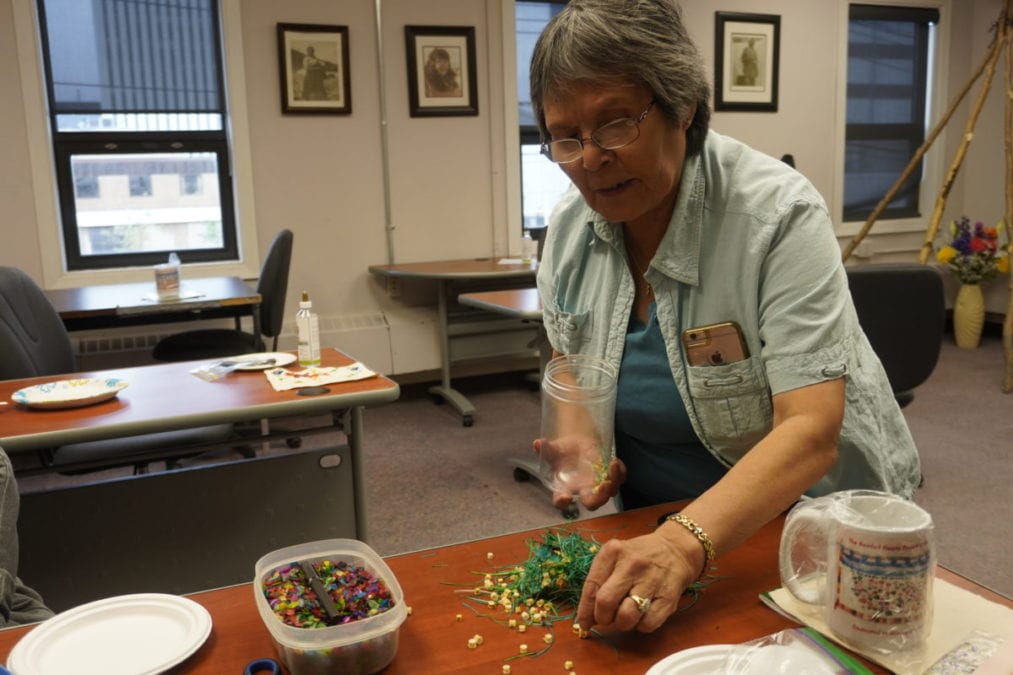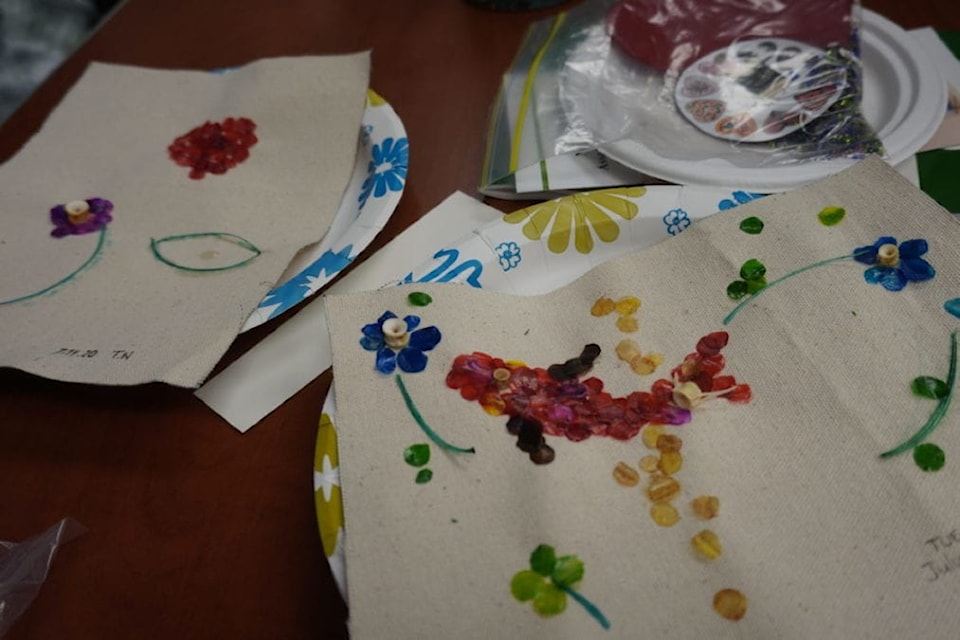“It’s a healing journey for our kids.”
That, Stacey Drygeese-Sundberg says, is why it’s so important for Indigenous children to be connected with their cultural roots.
“It’s a healing journey for our kids to get through the whole residential era and all the negative stuff that happened in history. We try to tell our kids that we have to move on with good things, with our culture, with our language, with our elders and the traditional knowledge holders,” she says.

Natalie Pressman/NNSL photo
Drygeese-Sundberg is the Foster Family Coalition’s newly appointed cultural coordinator. In collaboration with the Native Women’s Association of the NWT, she organized a two-day workshop this past Tuesday and Wednesday for girls in foster care to participate in beading and fish scale art activities with an Elder.
“The majority of our kids coming from small communities and going into the foster care system don’t really have that opportunity because they’re with non-Indigenous parents,” she says. “It’s only fair to teach them their own culture, their own language, about who they are and who their ancestors were.”
Alizette Lockhart is one of the founding members of the Native Women’s Association of the NWT. Now an elder, Lockhart teaches young Indigenous women and children to “get to know themselves,” and to get them through their healing journey.
Lockhart has been making fish scale art for many years. When she was young, she noticed that her mother used every part of the fish except its scales and thought there must be something they could be used for. Before they can be incorporated in art, Lockhart harvests the fish scales and bones, dries them out for several months and then colours them.
“I eat lots of fish,” she jokes.
In leading the workshop, she says that the participants – approximately 10 girls aged primarily 12 to 15 – “are learning to be patient as young girls becoming women.”
Lockhart says the girls did well and that these activities help provide tools to handle stress and other feelings that may arise down the road.
“I asked them, 'Who’s done this,' and no one had. So when I asked how it went, they said it went good – and I could see a smile, and they were happy. We said that they could leave (their art) here but almost all of them took them home.”
As part of her role as cultural coordinator, Drygeese-Sundberg is also working to integrate cultural practices in more Yellowknife commercial settings.
“I would like to see more Yellowknife businesses and organizations reconciling with the Indigenous people of the North,” she says. “The majority of the people here are Indigenous and it's only right that they come and reconcile with our people.”
“There should be more cultural awareness,” she says. “More teaching about our treaties and our people, politics and everything in between.”
There is lots of work to be done, but with programs like these, and more organizations working towards reconciliation, Sundberg says “we’re well on our way.”
